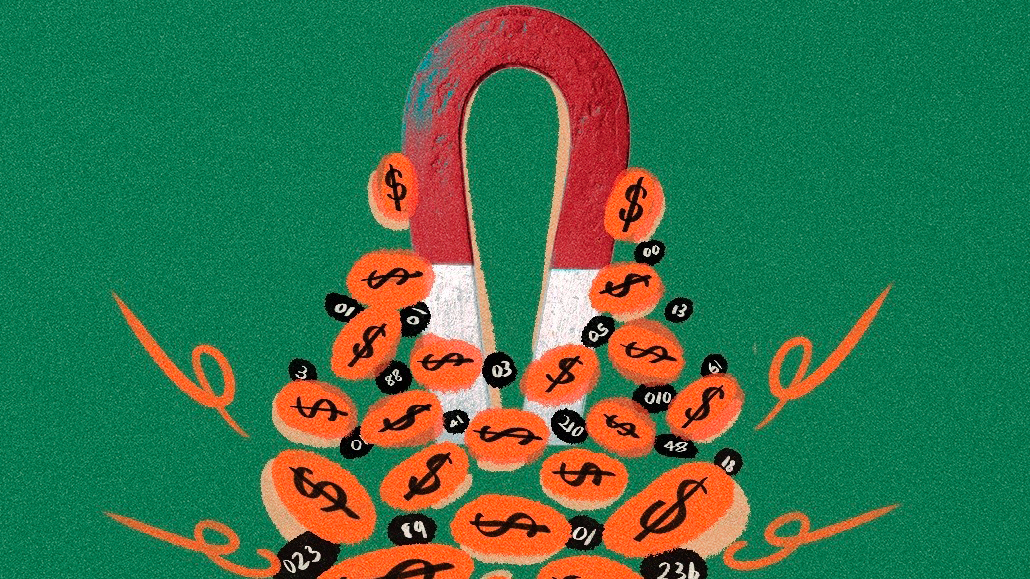Save 50% on a 3-month Digiday+ membership. Ends Dec 5.
‘There’s not enough money to go around’: Agency execs sound off on promises of burgeoning retail media landscape

The retail media network landscape is burgeoning to say the least, with every retailer from Walmart to most recently Chase Bank as of this week, looking to cash in on their first-party data and ad opportunities. It’s a trend that’s not expected to slow anytime soon, especially as the fallout from Google’s third-party depreciation continues to escalate the importance of first-party data.
Retail media is expected to make up one-fifth of worldwide digital ad spend this year, reaching $140 billion, according to eMarketer. That figure is significantly up from the forecasted $115 billion of last year. But as advertisers grapple with the influx, some say their ad dollars can only stretch so far.
“There’s not enough money to go around for this to be sustainable,” said Ethan Goodman, evp of digital commerce at The Mars Agency. “Once you get past a certain point, the offerings start to blur together and the question becomes, why don’t I just invest in the [major players, like Amazon, Walmart, Target and Kroger].”
The retailers themselves seem to be taking notice, making moves to stand out from the competition by beefing up their offerings to scoop up their fair share of ad dollars. For example, The Home Depot hosted its inaugural InFronts to announce a rebrand and new media offerings by way of in-store signage and streaming advertising. Meanwhile, Walmart acquired Vizio back in February to bolster its retail media offering by adding streaming capabilities to attract more brand marketing ad dollars.
“Connected TV and retail media are the fastest growing, hottest segments within media growth overall. It’s a sign of the arrival of this channel, the maturity of this channel,” said Chris Shewmake, vp of communications strategy and media at Cactus ad agency. “Retail media is now fighting for dollars from advertisers they probably haven’t fought for historically because of the growing maturity of the channel.”
Increasingly, retailers are moving to build out more holistic offerings, ramping up brand building media opportunities, like social media and streaming services to make a play for brand marketing ad dollars.
Meanwhile, other competitors like Wawa and 7/11 convenience stores are banking on their media placements at the gas pump to spark advertisers’ interest. With more retailers comes more competition. However, the pool of ad dollars dedicated to retail media hasn’t grown enough to keep up with the growth fledging channel.
Amazon is kingpin when it comes to the retail media space, raking in nearly three-quarters of the $59.61 billion in U.S. digital retail media ad spend, per eMarketer. However, there is a shift happening. As Amazon’s competitors continue to shape up their own offerings, advertisers are spending beyond Amazon to include Walmart, Target and more.
The continued evolution in the retail marketing landscape is said to be off-site advertising, or retailers’ ability to place ads in channels outside of their own properties by way of partnerships with streaming networks and other third-parties. Retailers are pushing off-site as part of their pitch to stand out from the competition.
“The most valuable asset that retailer retail media networks have at their disposal is this unique first-party data and these first-party audiences. The push into off-site just exemplifies it,” Goodman said. “The more places where retailers can take their amazing data and find audiences on the open web or in social media environments or wherever it’s going to be, the better off they’re going to be.”
Molly Hop, evp of Havas Market for North America, puts the next phase of growth into three categories: On-site, which are the current “tried and true” pillars of retail media; off-site, where brands can leverage retailer’s first-party data on channels outside of their own properties; and finally, social and shoppable media, especially as it relates to shoppable ads on streaming platforms and social media.
“It’s almost like a flip on its head where we all got into influence, influencer marketing before we were really diving into retail media. And now, I almost feel like it’s coming back to that obviously, in a more advanced experience,” she said.
Those capabilities will be a big draw for advertisers. But perhaps the most important draw will be around measurement and standardization. With the rise of retail media networks and their individual walled gardens, marketers have been grappling with the lack of standardization. The IAB took an initial pass on retail media measurement guidelines last September, releasing its final version of those guidelines in January.
Agency execs say there aren’t enough ad dollars to go around, but that likely won’t stop the rapid expansion of the retail media landscape. The Home Depot hosting its first InFronts in a pitch to lock in ad dollars sooner rather than later speaks to that.
“It just shows this proliferation of retail media networks. We just see that group growing, not yet necessarily contracting,” said Jennifer Kohl, chief media officer at VML ad agency. “Like streaming and like a lot of the other very fragmented places, these big players are going to lead the way.”
More in Marketing

Blended teams: From stopgap to strategic advantage
Blended team members aren’t cheap labor — they’re precision specialists delivering high-impact results.

In Graphic Detail: Inside the growing rift between AI efficiency and audience trust
What follows are five charts that ground where the debate stands as the year winds down.

The chance to win the holiday marketing season has already come and gone, per Traackr’s holiday report
The influencer marketing platform tracked the top brands according to VIT, Traackr’s proprietary metric for visibility, impact and trust.









